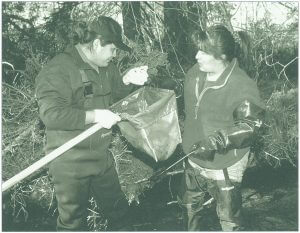Engaging with Tribes
2001 - Engaging with Tribes
Ken Margolis‘s strong relationships with tribal partners and experience with coalition building, coupled with River Watch Network’s work with tribes from the Northeast to the Southwest led to an increase in our overall work with tribes, especially around water monitoring and the Clean Water Act.
“We were getting more involved in Lake Champlain and its northern tributaries, looking at mercury levels. Most significantly affected were the Abenaki, who have a presence in the area and who rely heavily on fish from the lake as a food source. We were able to get a handle on their exposure and risk and help them minimize it. When the Rio Grande work started, we were working with people on the Mexican side of the river who were being taken advantage of as cheap labor, health disparities, and other issues. There was a recognition that we could apply the River Watch model in communities that were at higher risk, and this led to us to more explicitly serve disadvantaged and vulnerable groups at the local level.”
-Jack Byrne, former director of River Watch Network, prior to River Network merger
Building on this work, 2001 saw the creation of the Tribal Services Program to continue serving tribal governments and coalitions in developing long-term program goals, community health surveys, and water monitoring methods.

Taos Pueblo environmental staff participate in a River Watch training. River Network photo.




